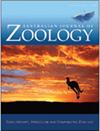蚂蚁介导的刺槐虫卵和长叶刺槐种子的传播依赖于蚁种
IF 1
4区 生物学
Q3 ZOOLOGY
引用次数: 0
摘要
摘要种子寄主是被子植物和蚂蚁之间广泛存在的一种共生关系,种子的传播是通过一种富含营养的附属物来促进的,这种附属物被称为寄主体。一些种类的phasomides (Phasmatodea)已经收敛地进化出一个附属物,卵头状花序,类似于卵裂体。对相粒卵抗媒介传播的研究是有限的。目前尚不清楚蚂蚁和相粒卵之间是否存在物种特异性的相互作用,也不清楚蚂蚁对卵的这种行为变化是否与对种子的行为相似。我们观察了五种澳大利亚蚂蚁对尖叶蝉卵和金合欢种子的行为。我们发现不同种类的蚂蚁在传播相粒卵和植物种子的可能性上有显著的差异。紫虹膜虫去除的卵和种子数量最多。金属纹蝽也能去除大量的种子但较少的卵。有三个物种没有取下任何卵,但取下了少量种子。我们发现了一种物种特异性的成分来分散相粒卵和种子,表明这种互惠关系可能取决于伴侣的身份和丰度。虽然种子和卵已经趋同进化,以利用蚂蚁的行为,但它们在某些蚂蚁物种中引发不同的行为,突出了这种相互作用的复杂性。本文章由计算机程序翻译,如有差异,请以英文原文为准。
Ant mediated dispersal of spiny stick insect (Extatosoma tiaratum) eggs and Acacia longifolia seeds is ant-species dependent
Abstract. Myrmecochory is a widespread mutualism between angiosperm plants and ants, where seed dispersal is facilitated by a nutrient-rich appendage known as the elaiosome. Some species of phasmids (Phasmatodea) have convergently evolved an appendage, the egg capitulum, that is analogous to the elaiosome. Research into ant-mediated dispersal of phasmid eggs is limited. It is unknown whether there are species-specific interactions between ants and phasmid eggs, nor if this variation in ant species behaviour towards eggs parallels behaviour towards seeds. We observed the behaviour of five Australian ant species towards Extatosoma tiaratum eggs and Acacia longifolia seeds. We found that ant species show significant variation in the likelihood of dispersing phasmid eggs and plant seeds. Iridomyrmex purpureus removed the largest quantities of eggs and seeds. Rhytidoponera metallica also removed large amounts of seeds but less eggs. Three species did not remove any eggs but removed small amounts of seeds. We found a species-specific component to dispersal of phasmid eggs and seeds by ants, indicating that this mutualism may depend on partner identity and abundance. Although seeds and eggs have convergently evolved to exploit ant behaviours, they elicit different behaviours in certain ant species, highlighting the complex nature of this interaction.
求助全文
通过发布文献求助,成功后即可免费获取论文全文。
去求助
来源期刊
CiteScore
2.40
自引率
0.00%
发文量
12
审稿时长
>12 weeks
期刊介绍:
Australian Journal of Zoology is an international journal publishing contributions on evolutionary, molecular and comparative zoology. The journal focuses on Australasian fauna but also includes high-quality research from any region that has broader practical or theoretical relevance or that demonstrates a conceptual advance to any aspect of zoology. Subject areas include, but are not limited to: anatomy, physiology, molecular biology, genetics, reproductive biology, developmental biology, parasitology, morphology, behaviour, ecology, zoogeography, systematics and evolution.
Australian Journal of Zoology is a valuable resource for professional zoologists, research scientists, resource managers, environmental consultants, students and amateurs interested in any aspect of the scientific study of animals.
Australian Journal of Zoology is published with the endorsement of the Commonwealth Scientific and Industrial Research Organisation (CSIRO) and the Australian Academy of Science.

 求助内容:
求助内容: 应助结果提醒方式:
应助结果提醒方式:


